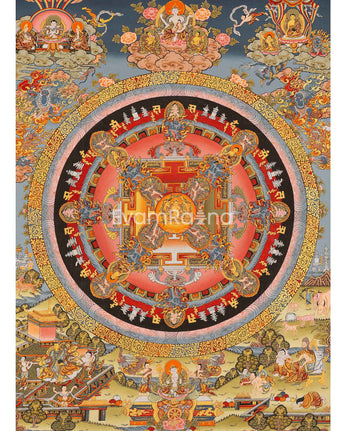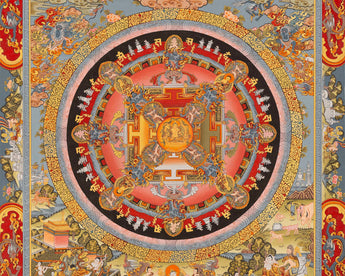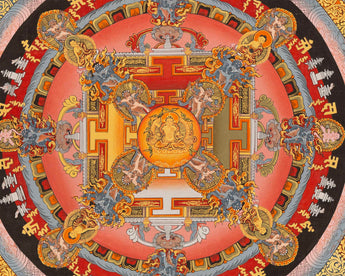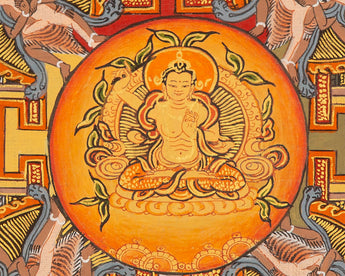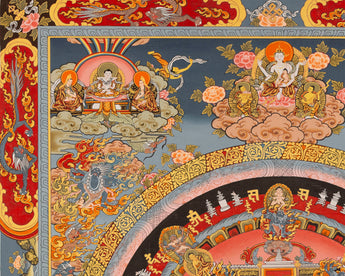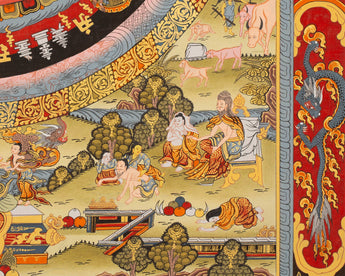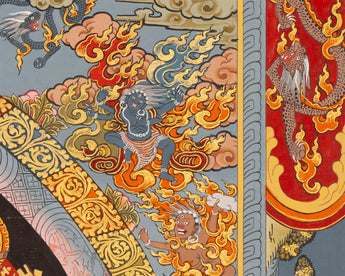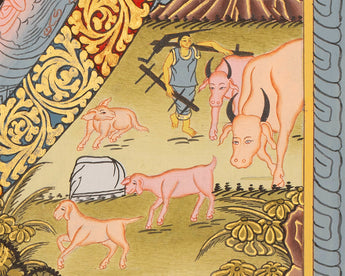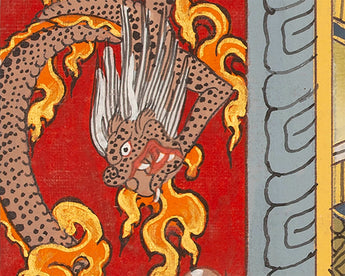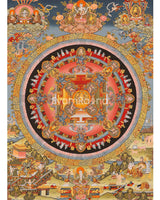
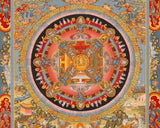
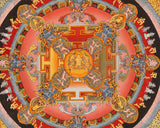
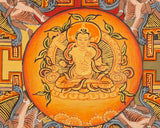
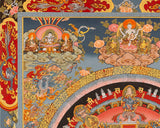
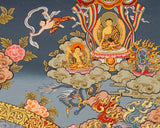
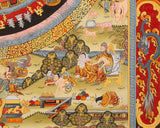

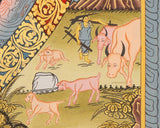
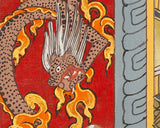
Traditional Mandala Art | Manjushri Thangka | Bodhisattva of Wisdom & Compassion

100% AUTHENTIC

HANDPAINTED

FREE SHIPPING
Traditional Mandala Art Nepal with Arya Manjushree in the Center
The Tibetan word Thangka means an unfolding painting, where the word Thang stands for an unfolding scroll and Ka means a painting. Thangka paintings, as a whole, are a visual representation of Buddhist deities, scenes, or mandalas, painted on silk or cotton canvas.
Thangka Paintings follow a generic principle of composition, design, and iconography. It is made following tradition and guidelines while leaving spaces for personal creativity and expression. In Buddhist culture, Thangka Paintings hold high religious values. In a way, it is also a tool that facilitates the realization of one's true nature or the nature of reality.
A mandala depicts in two-dimensional form the three-dimensional space inhabited by the deity. The bird’s-eye-view centralizes the main deity within concentric squares, circles and borders of his associated lineage and related figures, arranged in order of importance.
The right hand of Manjushri holds the Vajra handle of the Wisdom Sword covered with coiling blazing wisdom fire. The sharp iron blades of this wisdom- sword is metaphorically used, to cut through ignorance that binds us to Samsara. This very ignorance is the main reason for clinging to self and from there all the suffering arises. Just like a sharp blade penetrates and cuts through the hardest of objects, the wisdom sword or the teachings of the Buddha helps one cut through delusions of Me and Mine-the root cause of Suffering. With his left hand he holds the stem of a pastel blue lotus flower, supporting the mother of all Buddhist Texts the “Pragyaparamita-Sutra.”
------------------------------------------------------------------
Size: 17"/43 cm (width) x 22"/56 cm (height)
Materials: Cotton Canvas, Acrylic Colors, Genuine 24K Gold
------------------------------------------------------------------
THIS THANGKA IS HAND-PAINTED IN THE TRADITIONAL STYLE AND THE QUALITY IS HIGH
How to Take Care of Your Thangka?
- Hang your thangka in a traditional silk brocade.
- Regularly inspect your thangka; examine the borders and all attachments.
- Keep thangkas covered when they are on display but not in use.
- Rotate thangkas between display and storage two to four times a year to reduce exposure to light. Keep them away from sunlight and humidity.
- Do not apply liquids or other materials to the surface of the thangka.


